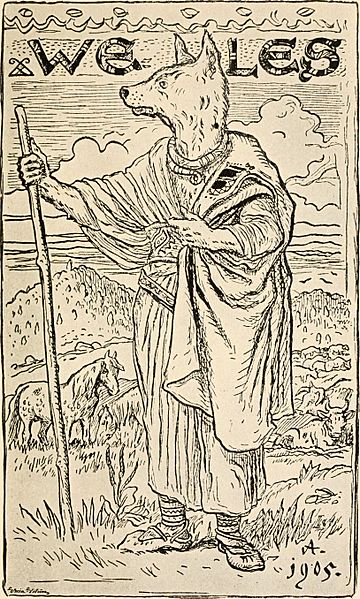Image: The Mythology of all races (1918) (14578796339)

Description: Identifier: mythologyofallra03gray (find matches) Title: The Mythology of all races .. Year: 1918 (1910s) Authors: Gray, Louis H. (Louis Herbert), 1875-1955 Moore, George Foot, 1851-1931 MacCulloch, J. A. (John Arnott), 1868-1950 Subjects: Mythology Publisher: Boston, Marshall Jones Company Contributing Library: Wellesley College Library Digitizing Sponsor: Wellesley College Library View Book Page: Book Viewer About This Book: Catalog Entry View All Images: All Images From Book Click here to view book online to see this illustration in context in a browseable online version of this book. Text Appearing Before Image: ard of Veles or leaving a handful of ears for Velessbeard; and in some districts a piece of bread is put amongsuch ears, probably as a reminiscence of the sacrifices offeredto Veles. Veles was well known among the ancient Bohemians like-wise, and his name frequently occurs in old Bohemian texts,although its original meaning has so utterly disappeared thatthe word now signifies simply the devil. ^^ After the introduction of Christianity the worship of Veleswas transferred to St. Blasius, a shepherd and martyr ofCaesarea in Cappadocia, whom the Byzantines called the guar-dian of flocks.^^ In this capacity the saint is still venerated inRussia, Bulgaria, and even in Bohemia; and the shepherds, PLATE XXXy Veles This deity of flocks corresponds to the Ganyklos(Devas), or (God) of Pasture, of the paganLithuanians. This representation, from a pictureby N. Ales, is highly idealized (cf. his conceptionof Svantovit, Plate XXXIV, i, as contrasted withthe ancient statue reproduced in Plate XXXI). Text Appearing After Image: VELES, VOLOS, AND STRIBOG 301 when driving their flocks to pasture, recite ancient prayerswhich are expected to secure his protection.^ Stribog, whose idol stood on the hill in Kiev beside that ofPerun,^^ was most probably the god of cold and frost; and inthe Slovo 0 pluku Igoreve ^^ the winds are called the grandsonsof Stribog. The conception of the winds as the result of coldand frost is easily understood. The chronicler Cosmas testifies ^^ that the Bohemians wor-shipped deities similar to Jupiter, Mars, Bellona, Ceres, etc.,and that they made idols of them; but the names of thesegods have not been preserved, and nothing positive is knownconcerning their worship. Numerous names of divinities wor-shipped by the pagan Poles are recorded by the chroniclerDlugosz,^^ but his report, belonging to a later period, seems tobe influenced by Classical and Christian thought. PART IVCULT AND FESTIVALS PLATE XXXVI Ancient Slavic Sacrifice Idealized representation of a Slavic priest in-voking a di Note About Images Please note that these images are extracted from scanned page images that may have been digitally enhanced for readability - coloration and appearance of these illustrations may not perfectly resemble the original work.
Title: The Mythology of all races (1918) (14578796339)
Credit: https://www.flickr.com/photos/internetarchivebookimages/14578796339/ Source book page: https://archive.org/stream/mythologyofallra03gray/mythologyofallra03gray#page/n456/mode/1up
Author: Internet Archive Book Images
Permission: At the time of upload, the image license was automatically confirmed using the Flickr API. For more information see Flickr API detail.
Usage Terms: No known copyright restrictions
License: No restrictions
License Link: https://www.flickr.com/commons/usage/
Attribution Required?: No
Image usage
The following page links to this image:

